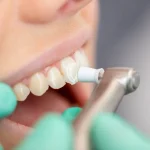The Rise Of At-Home Health Checkups
The healthcare industry has witnessed a rapid transformation in recent years, with at-home health checkups redefining how preventive care is delivered. In the past, routine screenings, chronic disease management, and preventive evaluations required in-person visits to a healthcare facility. Now, innovative programs like an in-home health assessment allow patients to receive comprehensive medical evaluations from the comfort of home.
An in-home health assessment leverages telehealth technologies and mobile healthcare professionals to bring essential services directly to the patient. This shift not only improves convenience but also expands the reach of preventive care to individuals who face barriers in accessing traditional healthcare settings. Following the increase in telehealth adoption during the COVID-19 pandemic, more patients and providers are embracing these new models as part of a long-term approach to health maintenance.
Benefits For Patients And Caregivers
At-home health checkups provide significant advantages for patients—particularly older adults, those with chronic illnesses, and individuals with mobility challenges. They eliminate the need for transportation, reduce exposure to contagious diseases in waiting rooms, and support better health outcomes by enabling timely intervention. For caregivers, participating actively in a loved one’s care produces peace of mind and strengthens collaboration between families and healthcare teams. Benefits such as increased comfort, flexibility, and reduced missed appointments have become hallmarks of home-based care.
The Role Of Technology In At-Home Evaluations
Technology is the backbone of modern at-home health evaluations. From mobile apps and wearable monitors to secure video conferencing, these tools support collecting and sharing health data in real time. Using user-friendly devices, patients can measure blood pressure, track glucose levels, or monitor other vital signs. Healthcare providers access these readings during virtual visits or through remote monitoring dashboards. Recent coverage from Forbes highlights how artificial intelligence and remote sensors are helping detect health issues earlier, enhancing patient engagement and clinical accuracy.
Challenges And Opportunities In Preventive Care
The transition to at-home preventive care is not without hurdles. Access to high-speed internet and digital devices can pose challenges, especially for lower-income or rural households. Ensuring digital literacy, technical support, and health information security is essential for success. However, with continued investment and innovation, these barriers are gradually diminishing. Health systems, insurers, and government agencies are allocating more resources to improve infrastructure and educate patients about digital health tools, creating opportunities to strengthen preventive care nationwide.
Addressing Disparities In Access To Care
One of the most promising aspects of in-home checkups is their role in reducing health disparities. By minimizing the need for transportation, home-based services remove significant barriers for those in underserved communities, including older adults, individuals with disabilities, and people living in remote areas. Early implementation studies suggest that in-home preventive care can help bridge gaps in chronic disease management, improve health outcomes, and increase compliance among populations that have historically faced challenges accessing consistent care. The Centers for Disease Control and Prevention (CDC) reports that equitable access to telemedicine is vital for reducing disparities and advancing community health.
Current Research On Preventive And At-Home Care
A growing body of evidence supports the value of preventive services delivered in the home. For chronic diseases such as hypertension and diabetes, studies have shown that regular home-based screenings lead to earlier detection and intervention, helping patients manage their conditions before complications arise. A recent study in JAMA Network Open found that in-home health visits improve adherence to care plans and reduce hospitalization rates. As these programs expand, researchers continue to analyze their cost-effectiveness, scalability, and impact on population health.
Steps To Prepare For An At-Home Health Visit
- Set up a quiet, well-lit area in your home for the checkup, ensuring privacy and minimal distractions.
- Collect recent medical records, a list of medications, and any relevant health history documents to provide your healthcare provider.
- Test your internet connection and devices if the visit involves virtual technology, ensuring everything is charged and functioning.
- Prepare a written list of questions, symptoms, or concerns to maximize the effectiveness of your consultation.
- If desired, invite a trusted caregiver or family member to participate as a support person during the assessment.
What The Future Holds For At-Home Checkups
Home-based healthcare models are increasingly shaping the future of preventive care by bringing medical services directly into people’s daily lives. As healthcare delivery continues to evolve, experts anticipate that at-home health checkups will soon become a standard complement to traditional clinic visits, offering greater convenience and accessibility. Advances in wearable technology, predictive analytics, and AI-driven diagnostics will enable highly personalized monitoring, allowing for earlier detection of health issues and more precise interventions. However, realizing the full potential of these innovations requires a strong commitment to health equity—ensuring individuals from all backgrounds have the resources, education, and support needed to benefit. Achieving this vision will depend on close collaboration among healthcare providers, technology innovators, and policymakers, working together to create scalable, inclusive solutions that improve preventive care outcomes and serve communities’ diverse needs across urban and rural settings.
Conclusion
The rise of at-home health checkups redefines how individuals approach preventive care, shifting the focus from reactive treatment to proactive wellness management. By making health assessments more convenient, accessible, and personalized, these solutions empower people to monitor their well-being regularly without the barriers of travel or scheduling delays. This increased accessibility encourages earlier detection of potential health issues, leading to timely interventions and better outcomes. For healthcare providers, it creates opportunities to strengthen patient engagement and tailor care plans based on real-time data. Integrating user-friendly devices, telehealth capabilities, and secure data sharing will further enhance effectiveness as technology advances. Ultimately, this evolution supports a more patient-centered, cost-efficient healthcare system that fosters long-term wellness, reduces preventable conditions, and encourages individuals to safeguard their health actively.







